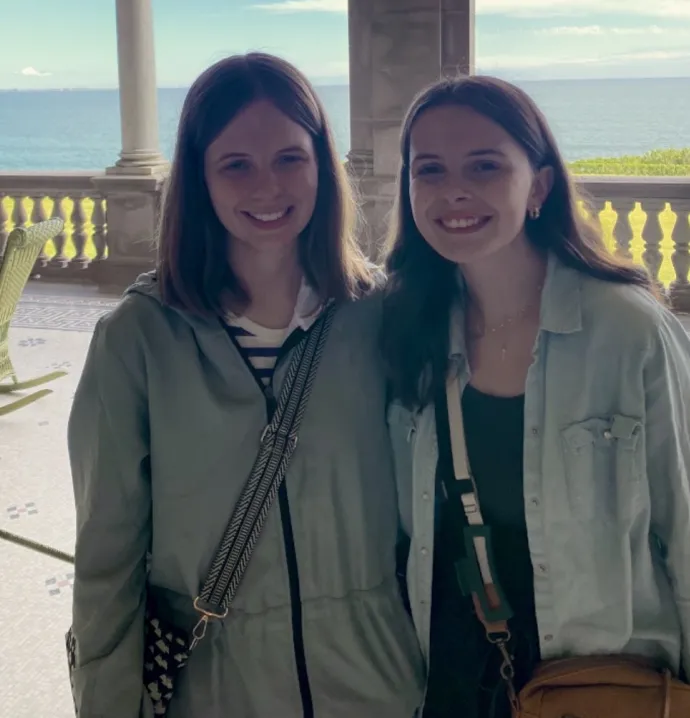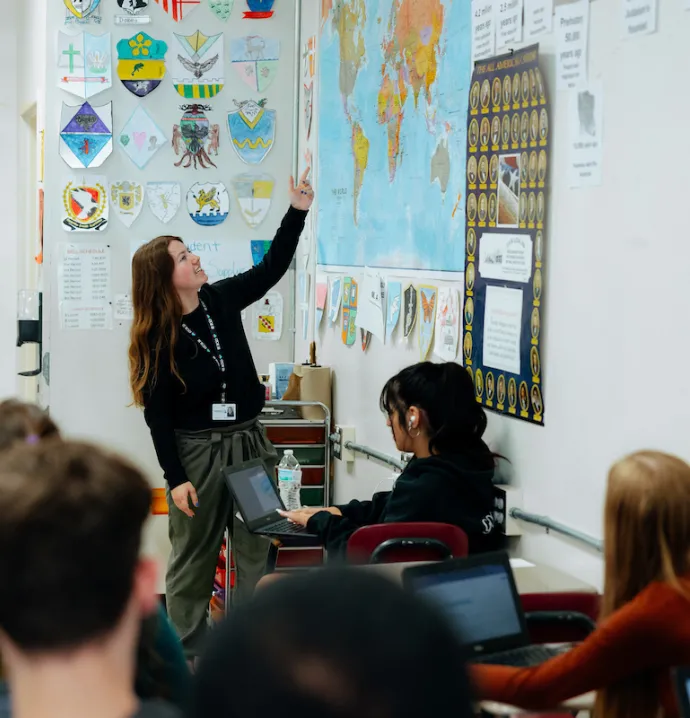UNI interior design students' work wins raves from Coca-Cola
UNI interior design students' work wins raves from Coca-Cola
As one of the world’s most recognizable brands, Coca-Cola routinely works with top-tier design firms. Even against that backdrop, when its North American division recently teamed up with UNI’s Advanced Design Studio II class to create a new in-store fixture, merchandising directors were left impressed.
“We were blown away with the caliber of students and the work they created,” said Susan Lazaro, director of Coca-Cola North America Visual Merchandising. “The end result of their designs gave us some wonderful ideas that we’ll hopefully see in market one day in the future to drive our business.”
Students worked in competing teams to design an in-store fixture promoting Coca-Cola’s “mini” line of small-portion canned sodas. The designs were shared digitally with Coca-Cola’s main office in Atlanta, and a winning design was selected to be considered for production in 2021. For Emily Hamilton, a recent UNI interior design grad and one-half of the winning team, the project could be her first time seeing one of her designs go to market.
“This was a really neat opportunity to practice working more on the commercial side,” said Hamilton. “Never did I ever think that I would be working with a company this large on any project. I also think it’s really neat that our idea could come to life because I’ve also never experienced that yet.”
The winning design featured a whimsical dual surfboard concept, showcasing two different size packages of mini Coke cans on different sized surfboard-shaped shelves. The design process alone gave many students their first glimpse into the variety of opportunities available in the interior design industry.
“We heard we were doing a retail project, but I didn’t know it was an actual fixture, rather than a floor plan,” said recent UNI interior design grad Natalie Neuzil, who co-designed the winning display for the spring 2020 project with Hamilton. “This definitely opened my eyes and made me realize I can use my interior design skills to design fixtures. It’s not just residential or commercial, it can be all these subcategories.”
Students worked with Illinois-based merchandising and retail firm Bish Creative on the project, which gave them hands-on experience with a lesser-known side of the commercial interior design industry.
“Decoration is a small portion of what we do as interior designers. Interior architecture would be a better word for interior designers. We are planning interior spaces,” said Anne Farniok, an instructor who led the design project and co-taught the UNI class. “[The project] was an opportunity to give [students] retail design experience. It really gave them a glimpse of what it would be like in the real world.”
The project was in collaboration with the Planning and Visual Education (PAVE) initiative, an organization devoted to promoting the retail industry to college students.
“Our goal is to get [students] in front of industry which hopefully will lead to career opportunities,” said Dash Nagel, director of PAVE.
UNI’s interior design program is accredited by the Council for Interior Design Accreditation, which has rigorous standards meant to prepare students for work in the field. The Advanced Design Studio II class in particular is meant to give students real-world experience.
“It's kind of like a capstone experience for the students. In it, they address an advanced design problem, which has multiple components, touching many different aspects of the design process,” said Gowri Betrabet Gulwadi, UNI professor of interior design. “I think PAVE fit in very well. … It was an extremely valuable connection to those in the industry who actually translate a design from paper and make it happen.”
Betrabet Gulwadi usually teaches the class on her own, but Farniok was brought for a year-long contract and it was her connection with PAVE that helped bring the program to UNI. Nagel was impressed with UNI students’ work and could see PAVE’s partnership with UNI continue.
“I came away thoroughly impressed. They handled themselves very very well … they were very well-versed and they handled themselves professionally. It just goes to show that there is great talent in all four corners of this country,” he said. “Our goal is always to reach as many schools as possible. To be able to give them the opportunities that some students only feel like you get in the big city has been really rewarding.”
While the PAVE project did help give students insight into a lesser-known area of interior design, UNI’s interior design program has strong connections to the local industry. With the success of the PAVE project, Betrabet Gulwadi looks forward to expanding the program’s network.
“The value that we have being in the Cedar Valley is we’ve got very good architectural and design firms in the area. I think students in the interior design program gain a broader perspective and the wonderful thing is we’re gaining that perspective from right here in the Cedar Valley, but also outside, like you’re seeing now with PAVE,” she said. “Having those near and far community connections is a wonderful part of UNI … and I’m really excited to see where it’s going to go in the future.”




